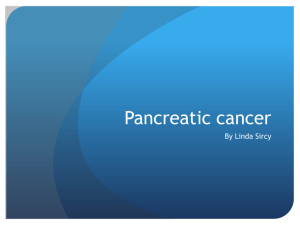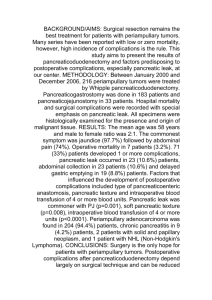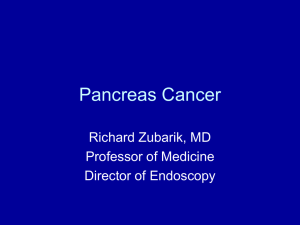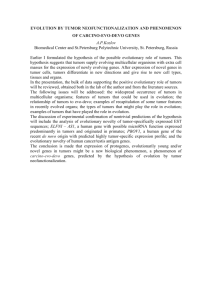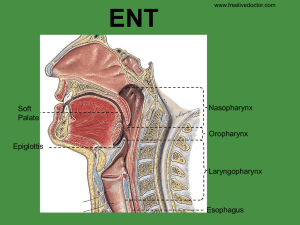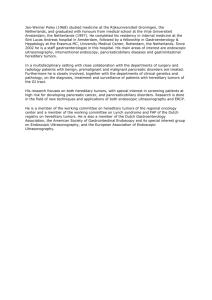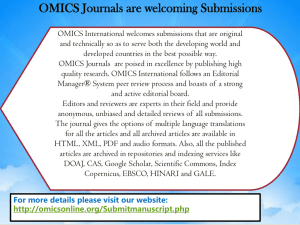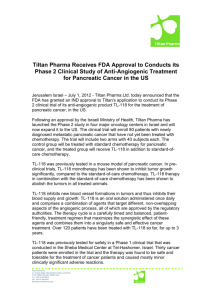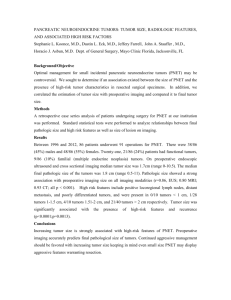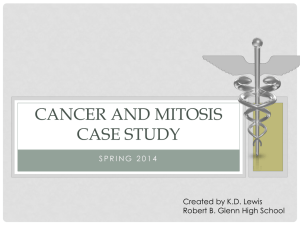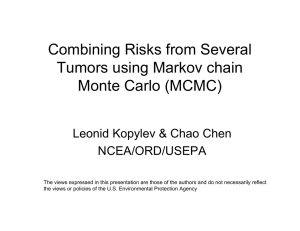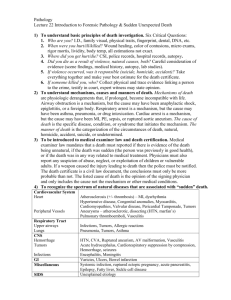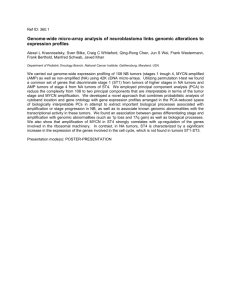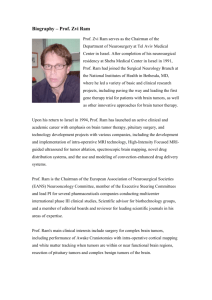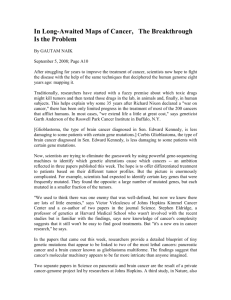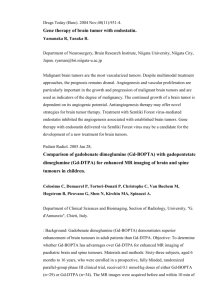Angiogenesis and invasion in pancreatic cancer
advertisement
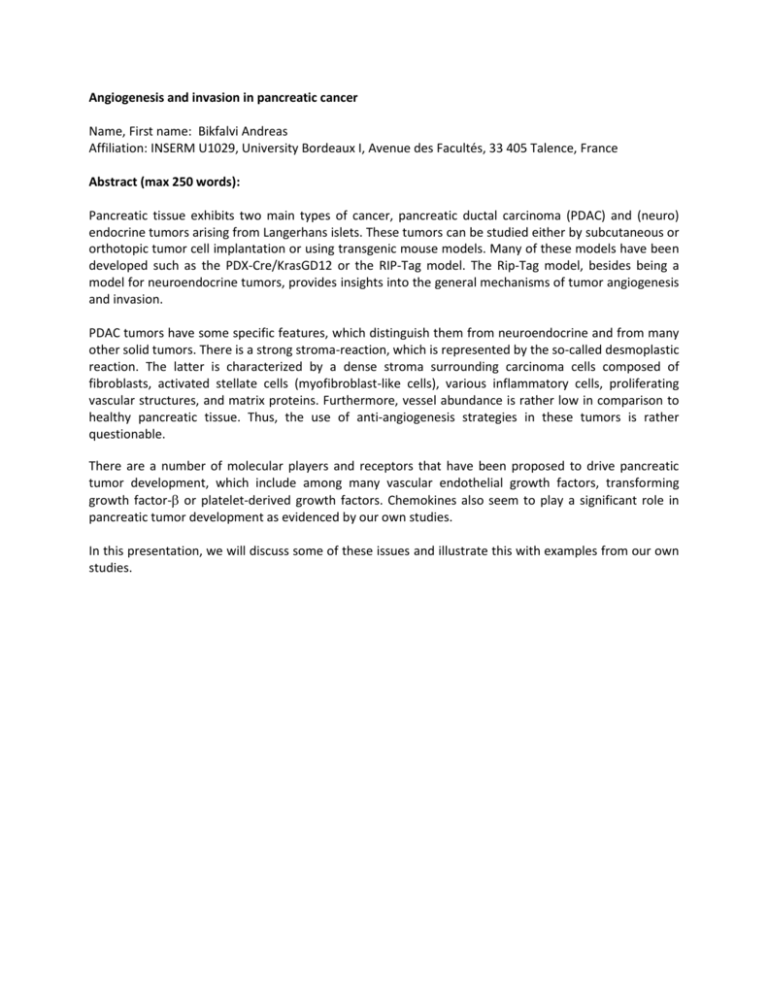
Angiogenesis and invasion in pancreatic cancer Name, First name: Bikfalvi Andreas Affiliation: INSERM U1029, University Bordeaux I, Avenue des Facultés, 33 405 Talence, France Abstract (max 250 words): Pancreatic tissue exhibits two main types of cancer, pancreatic ductal carcinoma (PDAC) and (neuro) endocrine tumors arising from Langerhans islets. These tumors can be studied either by subcutaneous or orthotopic tumor cell implantation or using transgenic mouse models. Many of these models have been developed such as the PDX-Cre/KrasGD12 or the RIP-Tag model. The Rip-Tag model, besides being a model for neuroendocrine tumors, provides insights into the general mechanisms of tumor angiogenesis and invasion. PDAC tumors have some specific features, which distinguish them from neuroendocrine and from many other solid tumors. There is a strong stroma-reaction, which is represented by the so-called desmoplastic reaction. The latter is characterized by a dense stroma surrounding carcinoma cells composed of fibroblasts, activated stellate cells (myofibroblast-like cells), various inflammatory cells, proliferating vascular structures, and matrix proteins. Furthermore, vessel abundance is rather low in comparison to healthy pancreatic tissue. Thus, the use of anti-angiogenesis strategies in these tumors is rather questionable. There are a number of molecular players and receptors that have been proposed to drive pancreatic tumor development, which include among many vascular endothelial growth factors, transforming growth factor- or platelet-derived growth factors. Chemokines also seem to play a significant role in pancreatic tumor development as evidenced by our own studies. In this presentation, we will discuss some of these issues and illustrate this with examples from our own studies.




